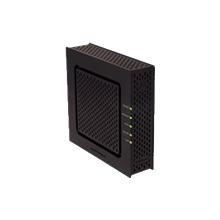Another year, another rate hike for millions of Comcast customers. The cable company is notifying cable subscribers of rate increases for programming and equipment. While Comcast says the rate increases are among the lowest the company has implemented, the sting will be felt differently based on the types of services a customer receives. One particularly nasty increase is for the cable modem rental fee. In most areas, that used to be $3 a month, but is now increasing a whopping 66% to $5 a month. Comcast blames the increased equipment expenses incurred upgrading their broadband network.
Consumers can avoid the monthly rental fee by purchasing their own cable modem, retailing for $60-100 depending on the model. A Motorola SB6120 SURFboard DOCSIS 3.0 eXtreme Broadband Cable Modem is available from Amazon.com for less than $90 and works with Comcast.
Although not every Comcast customer rents a cable modem from the company, the company will earn hundreds of millions of dollars in new revenue from the rate increase for cable modems, according to Multichannel News.
The Marin Independent Journal crunched the numbers:
In the San Francisco area, where Comcast has 2.2 million customers, the average rate increase will be 1.6 percent, down from a 4.9 percent spike in 2008-09 and a 6.9 percent jump in 2005-06.This year’s rate increase is the lowest in the past six years in what has become an annual rate hike for Comcast customers. The company has raised rates on its average Marin customer by a cumulative 29.5 percent over the past six years, based on the company’s annual notices of price changes.
The San Jose Mercury News observes that the rate increases will hit some harder than others:
Ironically, the customers who will see their rates increase are those who subscribe to the company’s lowest-end — and least-enhanced — packages. Subscribers to Comcast’s more expensive packages generally will see no rate increase.
Mindy Spat, communications director of The Utility Reform Network, a San Francisco-based consumer advocacy organization, said Comcast appears to be taking advantage of its lower-end customers.
She noted that many Bay Area consumers who were unable to tune in the new digital broadcast signals signed up for limited basic cable to continue to get the local channels after the old analog ones were switched off earlier this year. With the increases, Comcast also appears to be trying to push customers into higher-tier packages, she charged.
“If consumers had choices, they certainly would not choose Comcast,” Spat said. “But they don’t, and Comcast is taking advantage of the fact.”
Of course, the only thing not increasing this year is Comcast’s 250GB usage cap. It remains locked firmly in place at 2008 levels. How much Comcast will recoup from a perpetual modem rental fee providing up to $300+ million a year in new revenue is an open question. But clearly some cable operators intend to pay for upgrades to their networks by means other than forcing consumers into consumption billing schemes.


 Subscribe
Subscribe




